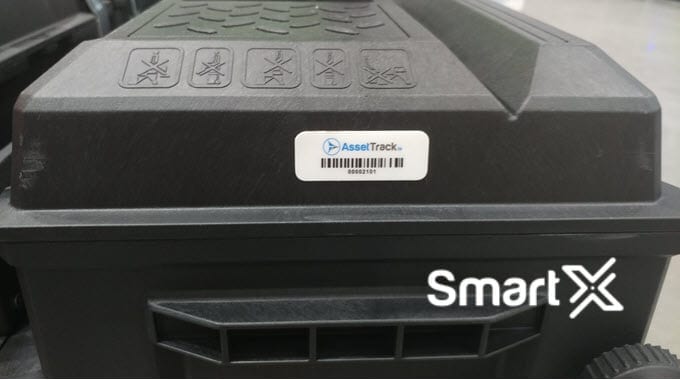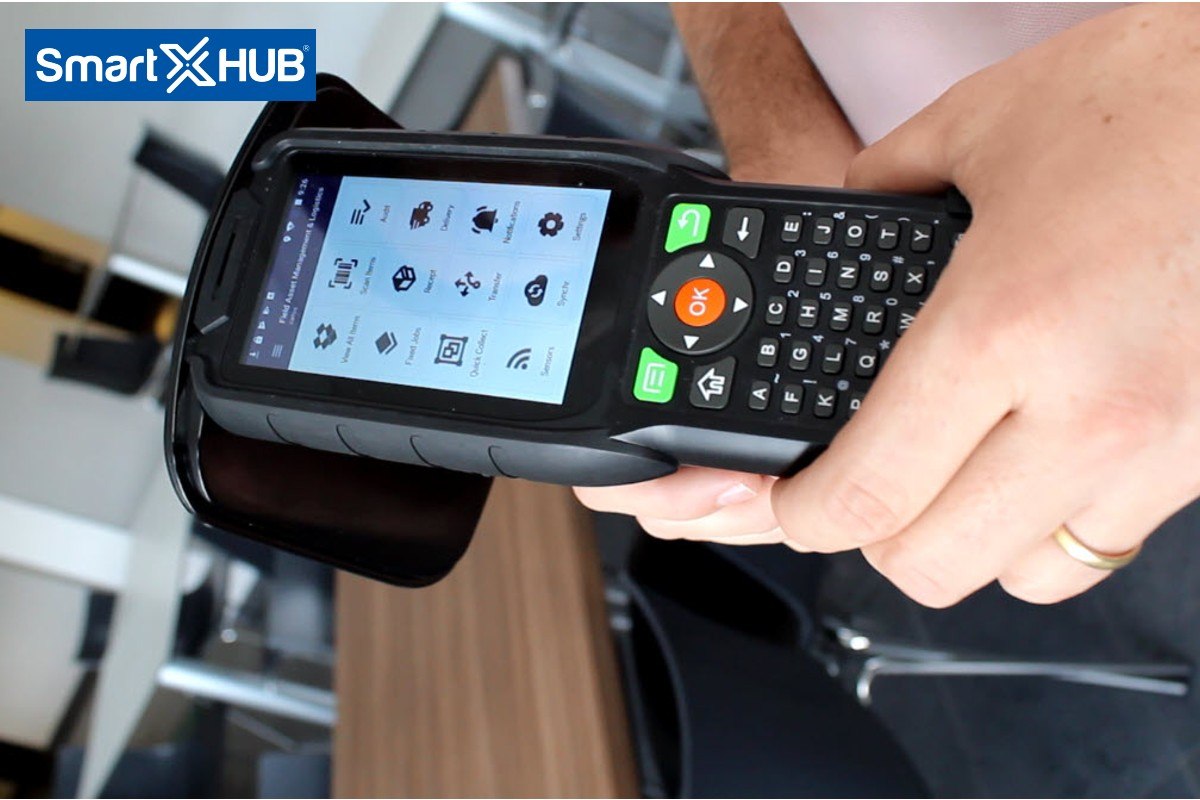Manufacturing Automation Optimized With RFID
Manufacturing Automation Optimized With RFID RFID tags facilitate the seamless transmission of data alongside a product, enriching the information as
Track asset performance, execute maintenance and service, and maximize uptime with advanced technologies.
Deliver as promised with risk-resilient, reliable, and sustainable logistics operations.
A revolutionary convergence of personal and process safety that improve efficiency, safety and reliability.

Fixed readers have more power and will generally have larger antennas compared to a handheld RFID reader, so the effective read range will be more excellent. Range depends on the vendor and model, but fixed readers can often read 2-3 times farther than that handheld RFID readers.
The antenna on the reader is another important variable that affects the read range. There are two common types of antennas: circular and linear. Linear antennas have a focused wave propagation. These antennas and antennas on an orientation-sensitive tag must all be in the same orientation to achieve maximum range. For example, if your orientation-sensitive tags are in a horizontal orientation, the reader antenna will also need to be in a horizontal orientation. If they are not in the same orientation, the read range might be a fraction of what it was at the same orientation.
Circular antennas work best when the orientation varies or cannot be controlled. They can read tags at almost any orientation; however, the read range is less than a linear antenna as the wave propagation is not focused.
The material that the asset is made of can have an impact on the read range of a tag. Some assets may have metal or liquid components, which can interfere with the read range. Depending on how close the tag is placed to liquid or metal, you could see significant interference. For example, a tag that reads in free air at 20 feet could potentially have a 6-inch read range (or less) when it is placed on a laptop. Laptops have a lot of metal underneath the plastic, which causes interference. If you have assets with metal or liquid components, you will want to evaluate tags specifically designed for work on these assets.
There are hundreds of different types of sizes and options to choose from for passive RFID asset tags. The larger the tag you choose, the larger the antenna will be, meaning it will have a greater read range than a small tag. There are some exceptions to this rule, especially for tags designed to mount on metal assets. These tags can be small and still achieve a large read range because they use metal to improve their performance.
Often customers prefer to find the smallest available tag, with the assumption that all tags have the same read range. They do not realize that those smaller tags are going to have shorter read ranges compared to the larger options.
There are different regulations and limits on reader power and frequency in different countries, which will affect read range. In Europe, the operating frequency is lower, and they are limited to using less power than in the U.S., so the range for the same tag and type of reader might be reduced in another country.
Weather conditions can often be a variable on the read range. For instance, if your asset is exposed to extremes of hot or cold temperatures, humidity, and rain. All these unpredictable conditions can cause variations in reading range.
Sometimes existing equipment or machinery used can cause interference with your read range, especially equipment that operates at a similar frequency.

Where you place your tag can affect read range. Some tags that are made for mounting on metal will perform better if they have free air on certain sides of the tag. When the tag is placed in the center with not a lot of metal, the range can drop. On assets like computers, laptops, servers, printers, projectors, etc., it may be difficult to know where the metal is on the asset, as the plastic case is covering up the underlying components. Test your metal mount tags in different areas of your asset, to identify which spot is best for metal mount tags. Taking the time to find these “sweet spots” can improve your tag read range significantly. Remember that the spot on one asset may not be the same spot on that same asset for another type of tag, so thorough testing is important.
Your tag may perform better when at a horizontal or vertical orientation, depending on the design of the antenna on the tag, and the type of antenna used on the reader. There are some tags that are designed to be less sensitive to the orientation and often are symmetrical in size instead of the most common asset tag shape, long and thin.
RFID unlike barcode does not need line of sight while scanning. Additionally, multiple RFID tags can be scanned at the same time, which results in huge productivity gains. These features make RFID advantageous for use in rapid inventorying, especially when the task needs to be performed more often and where automation of the process is desired.
An RFID solution can help provide a much more up-to-date view of asset locations than is possible with manual inventory or with barcode.
SmartX HUB RFID inventory management solution can help speed up the process of inventorying all your physical assets and help keep information about the assets updated in a comprehensive system such that reports can be generated and accessed from any web browser.

In its most basic configuration, SmartX HUB inventory management solution comes with various passive RFID tags, a portable handheld RFID reader, and SmartX HUB Server software.
RFID inventory tags affixed on the assets are associated with an asset record in the SmartX HUB application server system where additional information about the asset can be stored. The system is now ready for rapid inventorying.
At inventory time, a portable handheld RFID reader with SmartX HUB Mobile software can scan assets. All the data is collected and wirelessly transmitted to the SmartX HUB Server. SmartX HUB RFID asset tracking software can then be used to generate numerous reports. For example, basic reports can be generated to show moved or missing assets.
SmartX HUB Solution helps you obtain a more efficient workflow by improving your control over your project, enhancing safety on your Jobsite, reducing equipment downtime, minimizing safety hazards, increasing equipment life expectancy, and reducing repair costs. It provides you with the necessary means to stay on schedule, stay on budget and work consistently to keep your overall project on the right track.
The solutions, like SmartX HUB’s RFID, are fully automated, enabling workers to quickly get and return the assets they require without an asset attendant while still keeping the employee accountable for them.
By automating your processes with SmartX HUB RFID-IoT technology you can cut daily operational costs by significantly reducing labor and error costs through process automation. SmartX HUB offers a scalable, customizable and simple platform, easily fitting into your unique business process. To make it even easier, SmartX HUB runs on any web browser as well as any Windows, iOS or Android device.
SmartX HUB’s global presence, coupled with its deep industry and business transformation expertise, has proven that the methodologies and experience gained from thousands of worldwide engagements help clients achieve real business results and innovation quickly and cost-effectively.
Contact us to get more information on how we can help you overcome the challenges to your construction business or to check out a free demo.
Contact us at the SmartX office nearest to you or submit a business inquiry online.
Let us know how we can help you solve your business challenges!
Manufacturing Automation Optimized With RFID RFID tags facilitate the seamless transmission of data alongside a product, enriching the information as
IoT Ecosystem Empowerment: Advancing Workplace Safety and Efficiency with RTLS The Internet of Things (IoT) has arrived In the dynamic
California’s regulations for preventing heat-related illness in outdoor workers Introduction In situations involving high temperatures or extreme heat, it is
Organizations large and small and across industries can leverage RTLS to improve safety, safeguard materials and work more efficiently.
Discover how your peers are benefiting from real-time visibility.
©2014-2024 All Rights Reserved. SmartX Technology Inc